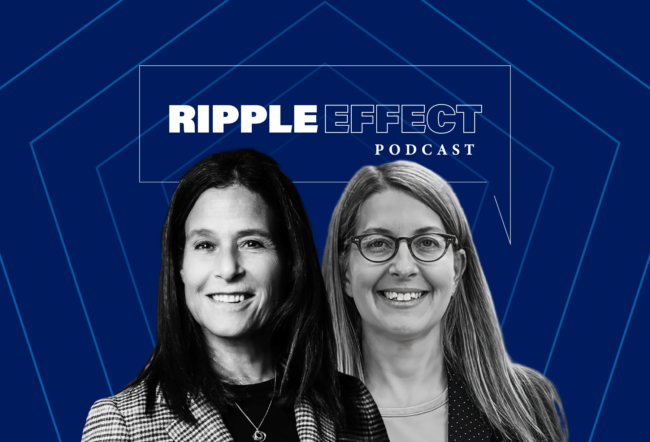Still wondering why the dot-com bubble burst? And what’s going to happen to all those smaller bubbles, the approximately 12,000 surviving dot-coms, many of them afloat solely on their last round of financing? Back in November 1999, Wharton marketing professor
Based on research into dozens of “old economy” shakeouts – from the invention of the railroad to the advent of personal computers – Day holds that this “new economy” shakeout is not much different. “Far too many players come in, there’s lots of excitement, high visibility, low barriers to entry – all those conditions applied. It was like every other shakeout we studied, just a lot faster, magnified by free-flowing capital, incubators and a tendency for everyone to converge in the same business model,” he says.
The critical error committed by most dot.com startups was to mis-identify the type of market they were entering. Day draws what he feels is a key distinction between a “breakthrough” and a “re-formed” market. Breakthrough applications create new products or services that would be impossible without the new technology; they give rise to totally new industries. “These situations are rare; less than 10% of new products are truly new-to-the-world products,” including, for example, televisions, xerography and artificial fibers.
By contrast, he says, re-formed applications, while they might enable cost reductions or other improvements, don’t change the basic functioning and purpose of the existing market. Most new economy start-ups thought they had a once-in-a-lifetime breakthrough with their new exchanges and facilitators, “so they created what they thought was a breakthrough business model.” The reality, Day says, was more modest.
He offers a cautionary tale from the recent biotechnology phenomenon. Many industry analysts believed these small start-ups would eventually replace the pharmaceutical giants. However, says Day, biotechnology was seen as a breakthrough market when it was actually a re-formed one: While the new technology improved the drug discovery process, it didn’t cause a wholesale redefinition of the pharmaceutical business model. As a result, most biotechnology start-ups – lacking expertise in sales, marketing, regulatory processes, distribution channels and management – were acquired or failed outright.
The same holds true for many dot-coms: The belief that they were entering a breakthrough was their downfall. “Misdiagnosing the market has led to three persistent myths about the sources of competitive advantage in online markets,” Day says:
Myth #1: First movers will dominate. True in a breakthrough market, not true in a re-formed one. B2B hubs, for one, have discovered that their greatest competition is not other B2B hubs but existing ways of doing business. “First mover advantage” versus another exchange is meaningless if customers prefer their in-place system of buyers, distributors and others. (Which leads to Myth #2…)
Myth #2: Behavior will change quickly. In re-formed markets, customers are slow to abandon older systems that work, even if they’re not optimally efficient. For example, many B2B auction sites are finding that “business customers care more about getting the right product at the right time than about saving a few percentage points on price.” And Internet banks are finding out the hard way that consumers are reluctant to give up their ATMs and move their household banking online.
Myth #3: Non-traditional pricing structures will be readily accepted. According to Day, although the Internet has enabled radically new pricing schemes, “most consumers still perceive a system of prices posted by sellers to be more convenient and fair.” He cites the much-reduced status of Priceline, with its revolutionary pricing policies, as an outstanding example. He also highlights the waning of “transaction fees” by B2B exchanges – a system of charging sellers 2-5% of gross sales as payment for matching them with buyers. Competition is quickly cutting these fees to marginal or even lower cost, and exchange operators are transforming their pricing models into more familiar forms: Ventro, a pioneer of the transaction fee approach, has become a software and service company.
Day predicts that the 10% to 20% of dot-com companies left standing after the shakeout will fall into two categories: pure-play start ups that managed to capitalize on their early mover advantages in true breakthrough markets, and incumbents who managed to successfully embrace the Internet in re-formed markets. For pure-play winners, he specifically names, among others, Yahoo and eBay. Day says that both were quick to exploit the breakthrough possibilities of the Internet with truly new business models, and both have shown they can continuously adapt.
For incumbents, Day is betting on companies such as Schwab, outdoor equipment retailer REI, Land’s End and Staples. He says they have successfully blended their traditional scale, scope and resource advantages with the re-forming potential of the Internet. They have respected and visible brand names, the ability to spread marketing costs across both channels, and leverage with suppliers. “In a reformed market, the incumbent has a lot of the chips: the brand name, the resources, the fact that most people don’t want to exclusively transact over the Net. So established firms in re-formed markets have a lot of advantages. And they’re exercising them.”
In addition, Day says incumbents have an intimate understanding of their markets, and have adapted to constraints peculiar to their industry that can trip up new entrants. (One industry constraint that has hampered Brandwise.com, a comparison-shopping website for appliances, is the fact that 80% of sales of consumer appliances are immediate replacements of broken units, which leaves little time for comparison shopping.)
According to Day, both pure play and incumbent winners will exhibit the qualities of the adaptive survivors of earlier shakeouts. “The companies that remain standing will be a resilient synthesis of old and new. Indeed, it won’t be long before the distinction between the old and new economies has no meaning.” But Day’s research has also revealed to him the predictable traps that these winners, which he calls adaptive survivors, must strive not to fall into:
• Avoid Complacency: The beneficiaries of the Internet need to watch out for innovations like wireless, pagers, PDAs and broadband networks, all technologies that rivals may begin to exploit. “General Electric’s competitors,” says Day, “should be worried that Jack Welch has gone from viewing the Internet as a ‘destroy your business’ challenge to a ‘destroy their business’ opportunity.”
• Exercise Management Discipline: Fast-growing businesses must realize that when informal decision-making becomes unwieldy and ineffective, a new working style with experienced managers from outside may be called for.
• Become Market-Driven: Businesses must experiment continually, learn from customer feedback, and use external metrics to monitor performance. They must shift from gathering as many customers as possible, to retaining the most valuable ones. Day quotes John Chambers, CEO of Cisco Systems, as saying that the first lesson on managing high growth is to “make your customer the center of your culture.”
• Maintain Resource Slack: “Successful e-commerce strategies have a well-defined thrust that defines how they deliver superior value to their customers, but enough flexibility to pursue unexpected variants and extensions as they emerge,” Day says.
What’s left for companies that don’t fall into either of Day’s “winner” categories? “Dot-coms with shaky long-run prospects can still come out ahead if they have the courage to face the future honestly,” comments Day. He suggests that such companies find a market area with little competition and satisfactory prospects for growth: “A lot of the survivors are going to be those that find a niche they can control.” He gives the example of Priceline, which though a shadow of its former self, has an approach that seems to work well with selling airline tickets. “Within this narrow niche Priceline has a loyal and potentially profitable customer base,” says Day, recommending that Priceline exit the long-distance phone, auto, and mortgage markets to nurture its core business.
And for prospective dot.com entrepreneurs – those who haven’t yet entered the market – Day’s recommendation is straightforward: “Don’t.”



